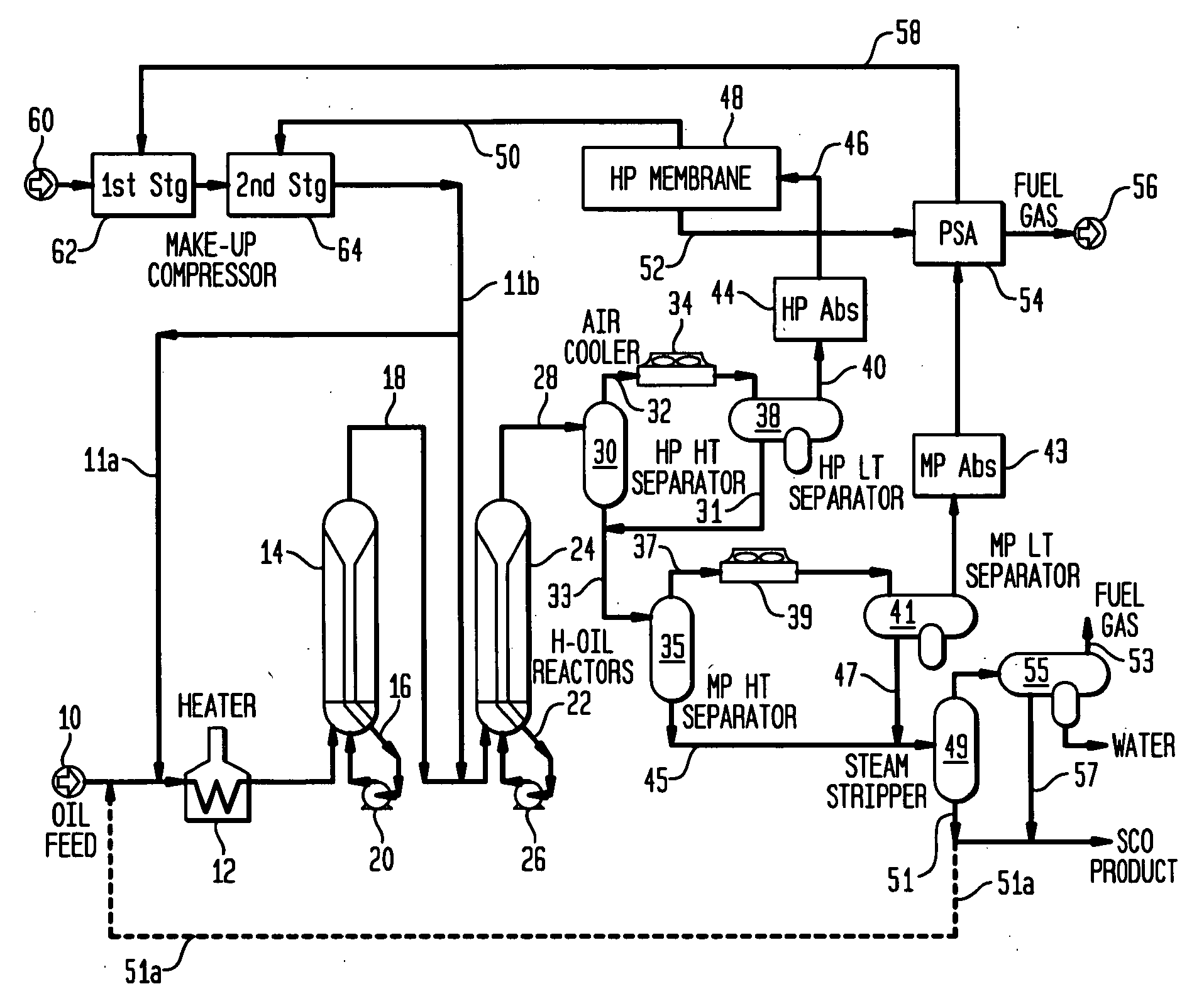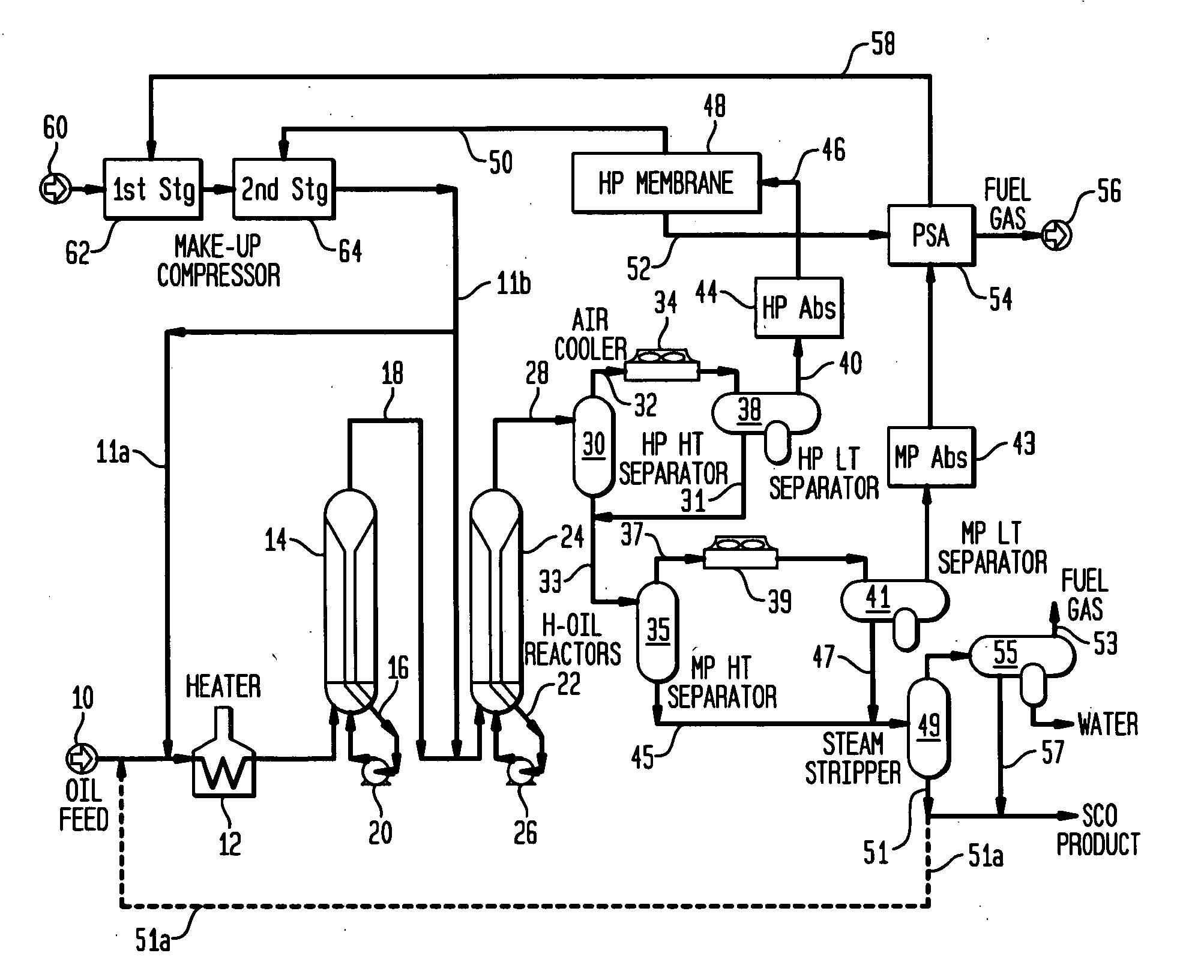Process for upgrading coal pyrolysis oils
a technology of pyrolysis oil and catalyst, which is applied in the direction of hydrocarbon oil cracking, hydrocarbon oil treatment, liquid hydrocarbon mixture production, etc., can solve the problems of limited utility of crude oil from the wellhead, less easy handling and transportation of coal than fluidic, and low utilization rate of coal pyrolysis oil, so as to reduce the requirement of makeup catalysts and improve catalyst utilization.
- Summary
- Abstract
- Description
- Claims
- Application Information
AI Technical Summary
Benefits of technology
Problems solved by technology
Method used
Image
Examples
example 1
[0063]Table 2 below shows the performance of the process using a typical coal pyrolysis oil with two different (single and two-stage) process configurations.
[0064]Case 1 is the pre-invention configuration which utilizes a single stage ebullated-bed reactor system.
[0065]Case 2 illustrates the performance of the current invention utilizing a two-stage ebullated-bed reactor system with optimized operating conditions.
[0066]Utilizing the same amount of reactor volume, the processing configuration of the current invention results in higher conversion, heteroatom removal and improved product quality.
TABLE 2Invention PerformanceCoal Pyrolysis -FEEDSTOCKOil CFeed Gravity, °API4.3Feed Gravity, S.G.1.042Hydrogen, W %8.9Nitrogen, W %0.6Sulfur, W %0.3Oxygen, W %7.8Boiling Range343° C.−43343° C.+57Case12Operating ConditionsNumber of Stages12Type of ReactorEbullated-BedEbullated-BedLHSV, hr−10.40.4Reactor Temp., ° C.427400 / 438H2PP, bar124124Performance440° C.+ Resid77.583.4Conversion, V %HDS93.098...
PUM
| Property | Measurement | Unit |
|---|---|---|
| size | aaaaa | aaaaa |
| wt % | aaaaa | aaaaa |
| wt % | aaaaa | aaaaa |
Abstract
Description
Claims
Application Information
 Login to View More
Login to View More - R&D
- Intellectual Property
- Life Sciences
- Materials
- Tech Scout
- Unparalleled Data Quality
- Higher Quality Content
- 60% Fewer Hallucinations
Browse by: Latest US Patents, China's latest patents, Technical Efficacy Thesaurus, Application Domain, Technology Topic, Popular Technical Reports.
© 2025 PatSnap. All rights reserved.Legal|Privacy policy|Modern Slavery Act Transparency Statement|Sitemap|About US| Contact US: help@patsnap.com


